Francis, SARDI staff member Trizah, and I traveled by motorbike over dirt roads through open savannah and agricultural land to reach the dispensary. As we went, Trizah pointed out an enormous, fenced agricultural operation known as Hippo Farm that grows green beans for AAA Growers for export to Europe. The farm, named because it's near a river with hippos, is owned by Indians, she said. (Indians own many of the big businesses in Kenya.) Francis told me that AAA Growers pays its workers a mere $2.05 per day (170 Kenyan shillings). Hippos devastate nearby farms when they leave the water to graze each night, and they can even kill people, but Hippo Farm does not have a problem with hippos due to their large fence that keeps the hippos out.
Before long, we reached the dispensary. The staff gave me a quick tour, showing how they have one inpatient room, and two exam rooms. They also have a small lab, a room that serves as a pharmacy and registration area, and they perform several immunizations. For more elaborate lab tests, they take samples and send them out for testing, which is exactly what many labs housed inside outpatient clinics do in the U.S. too. The dispensary is staffed by nurses.
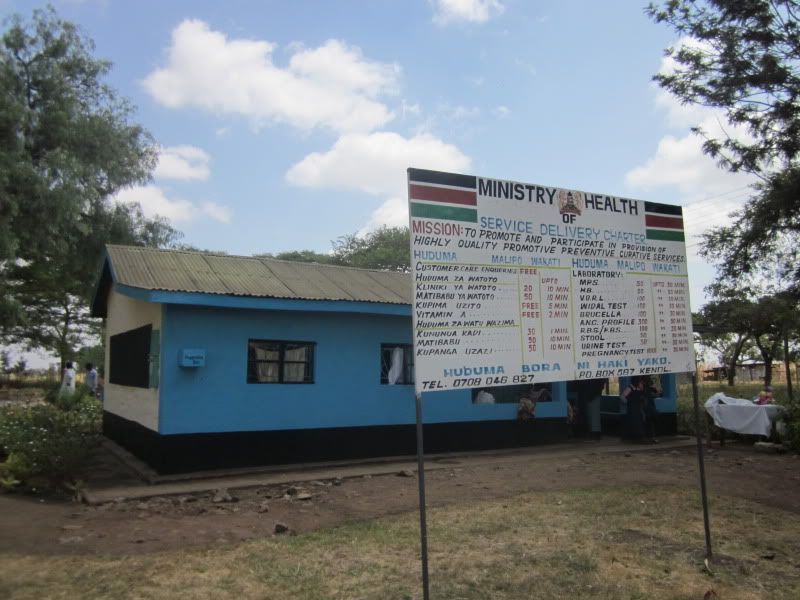
The dispensary
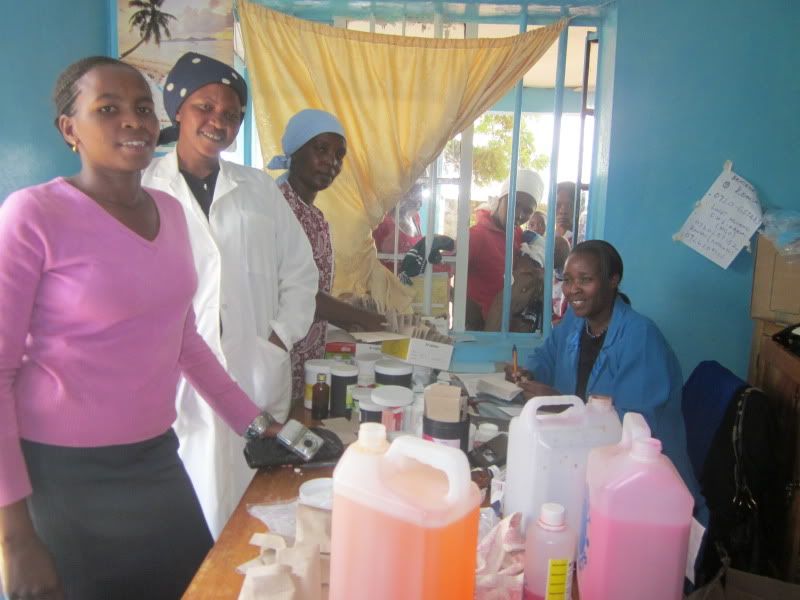
Pharmacy and registration area.
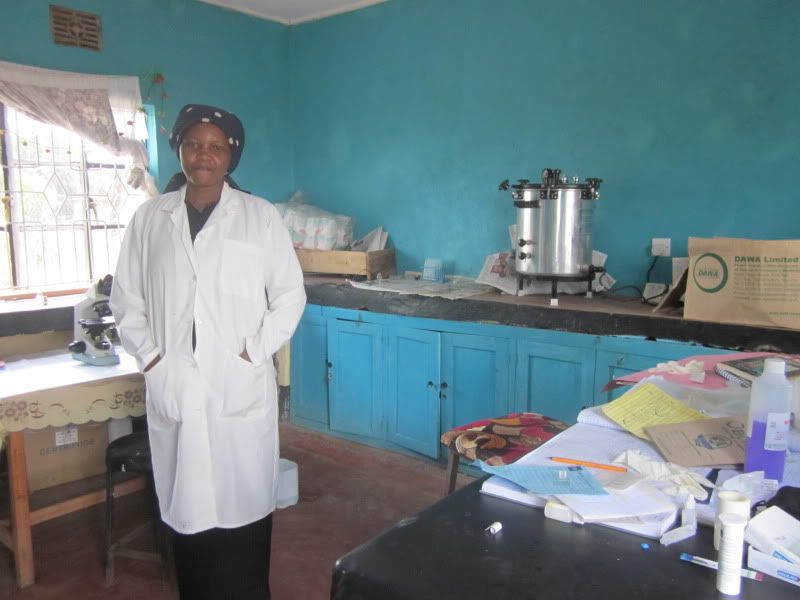
Lab

Immunizations kept in a fridge.
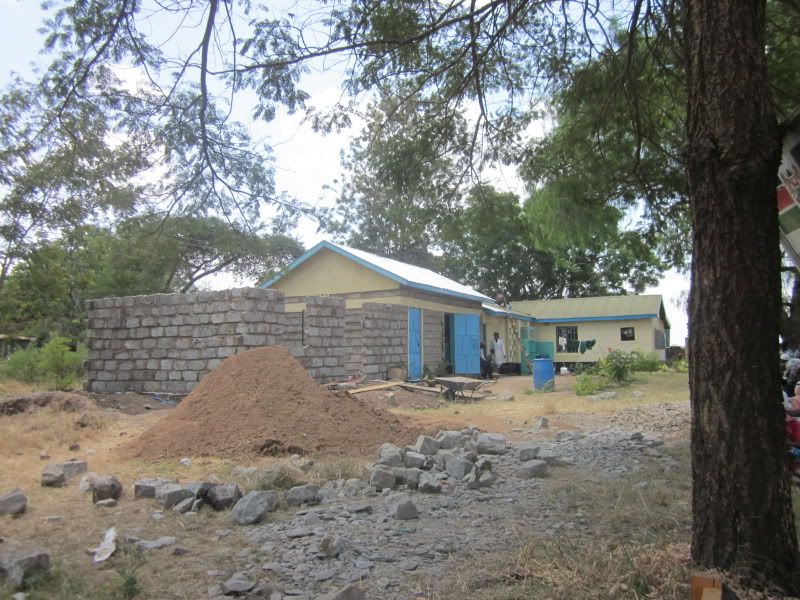
Under construction: A maternity area. Many people in this area give birth at home because hospitals are too far away.
We then headed outside to a group of young women and their children seated on the lawn and in a few chairs and benches. They had come for a workshop on biointensive farming, nutrition, and HIV/AIDS.
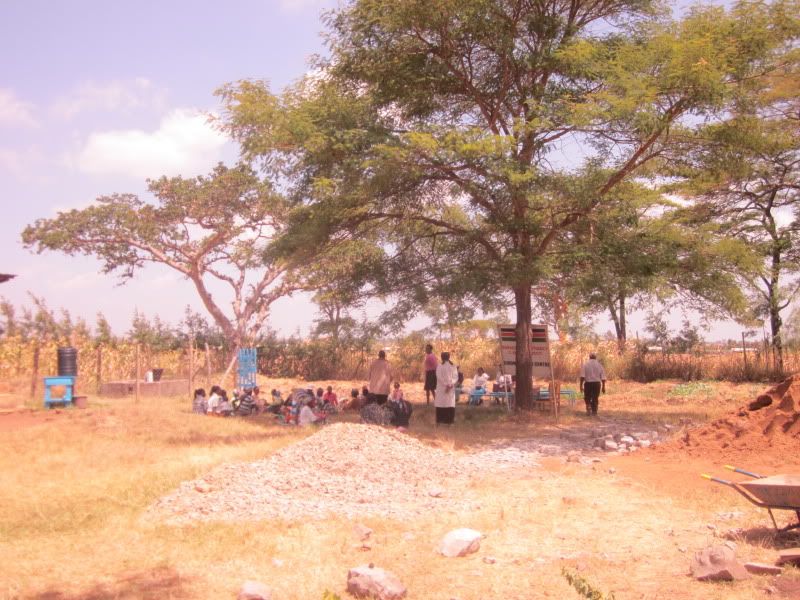
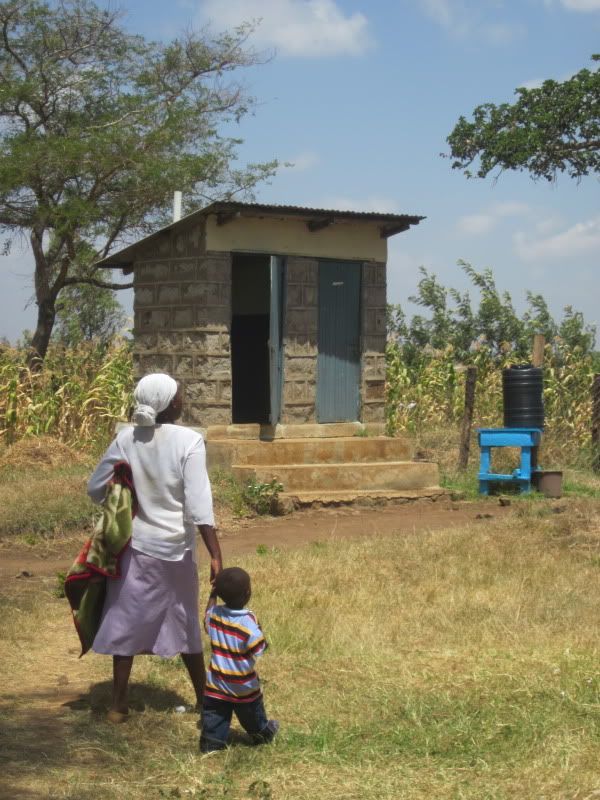
Francis pointed out a small demonstration garden that SARDI had helped set up, and then we took our seats for the workshop.

Demonstration garden
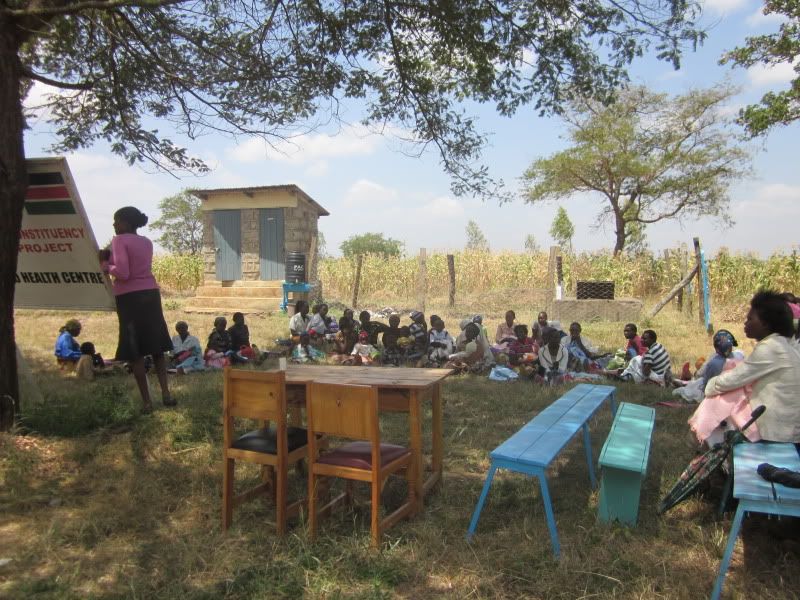
The workshop
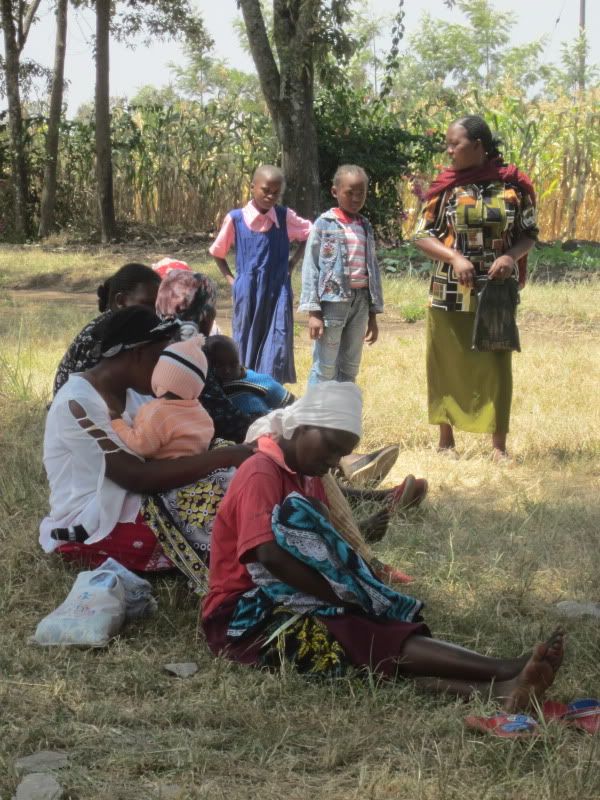
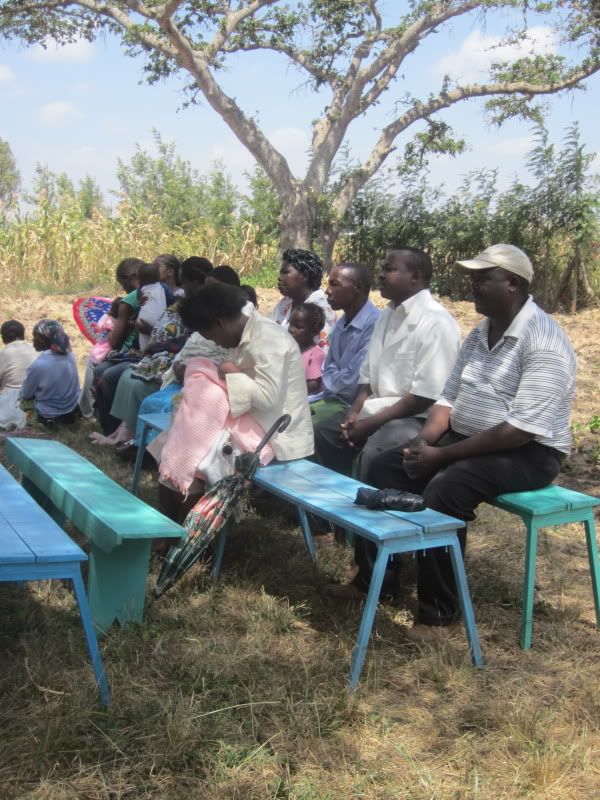
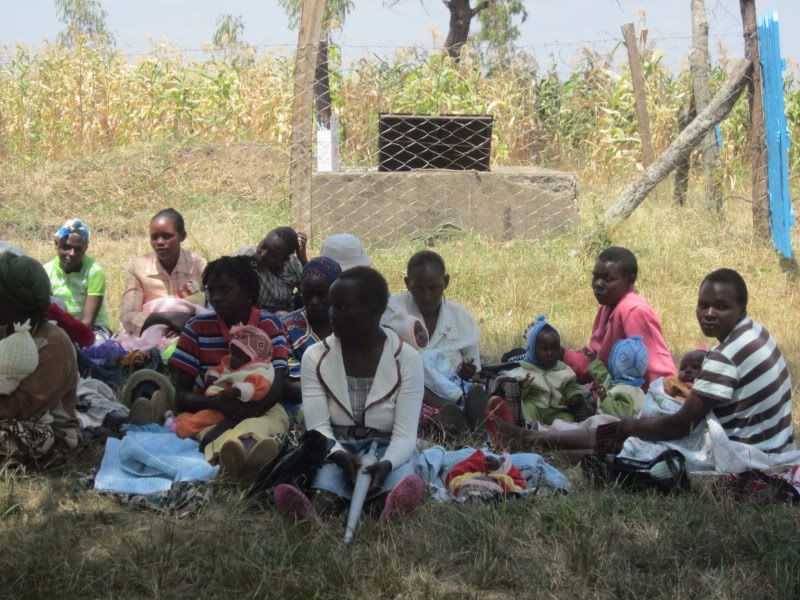
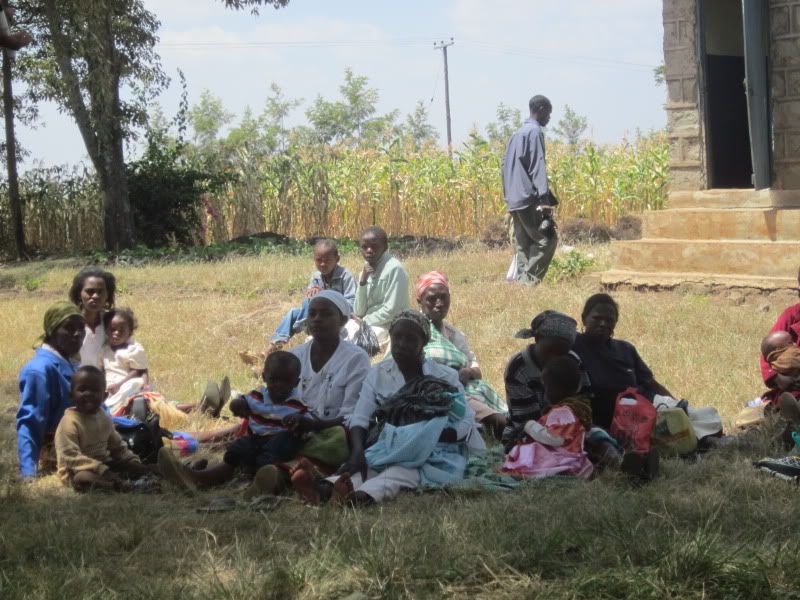
Trizah began the workshop. The audience was mostly Kikuyu but because a few were not Kikuyu and did not speak it, Triza spoke in Swahili. I could follow what she was saying based on the handful of English words she threw in: "compost," "fertilizer," "advantages of compost," "double dig," "prepare bed," "manure," "microorganism," and "reduce erosion."
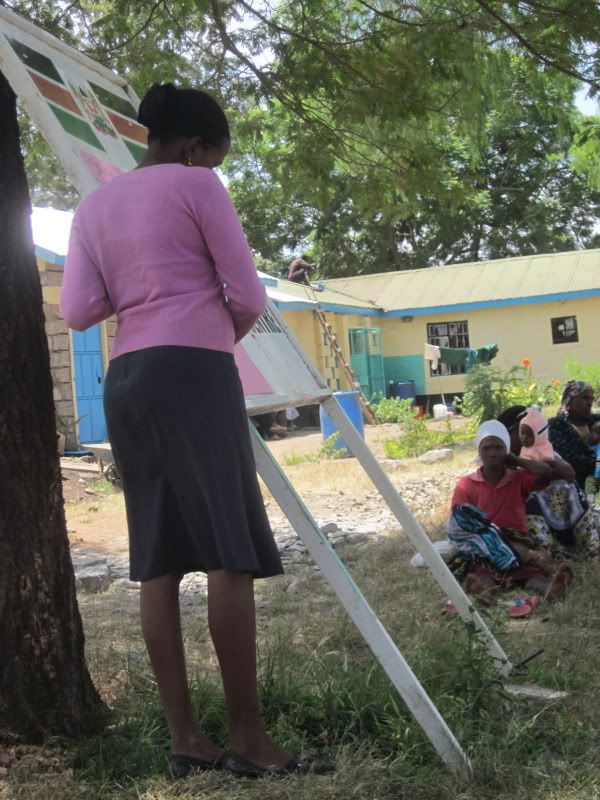
Triza
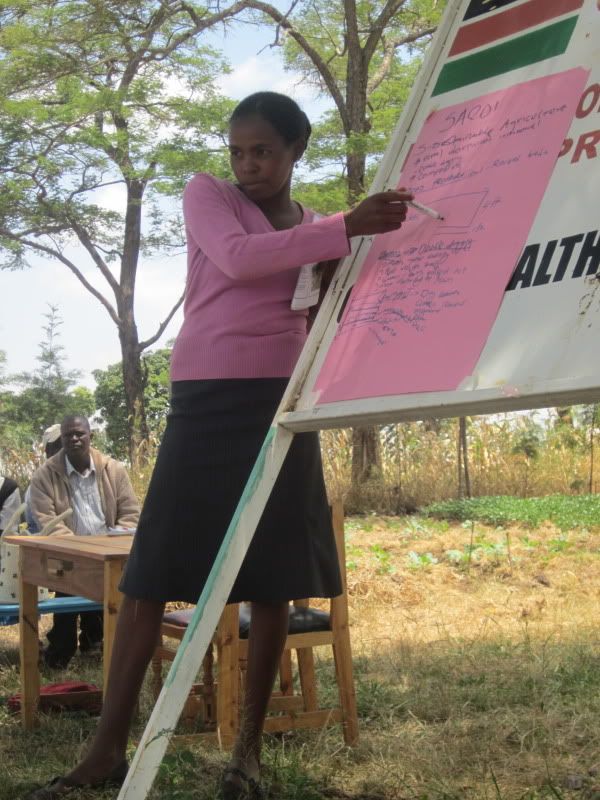
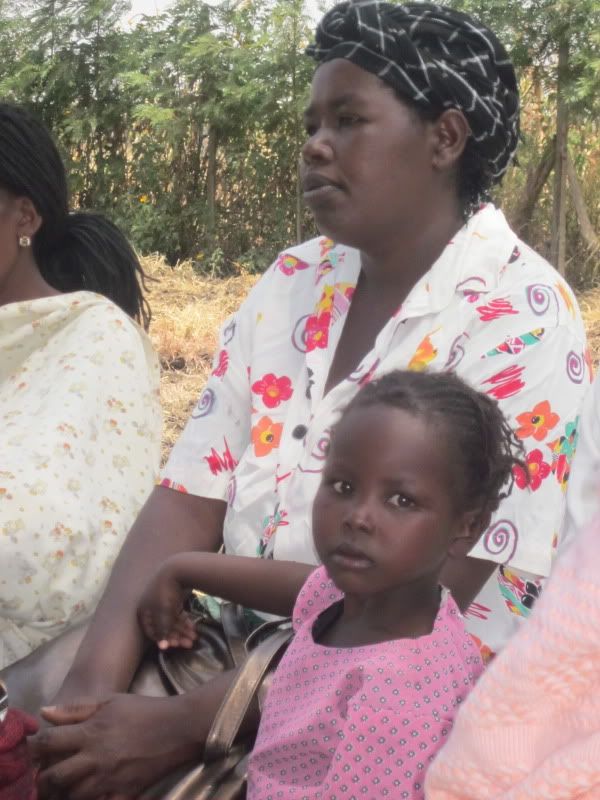
Mother and child at the workshop
Meanwhile, I flipped through a book from the series "Called to Care." The book was "Farming, Climate Change, Health, and the AIDS Epidemic," by Anne Bayley that had an AIDS red ribbon shaped like a heart on the front. It was a Christian approach to the subject, which is quite appropriate given the population here. Here's an excerpt:
Jesus used meals to make friends with people who were 'outsiders': Men and women stigmatised by society. Do you remember, only a few years ago how difficult it was to eat with people who might have AIDS? - p. 15
The book went on to make the case that land is now less productive due to erosion, because seeds and fertilizer are too expensive, young people don't want to farm, people with antiretrovirals (i.e. with HIV/AIDS) are too weak to farm, there are too many orphans, and the government doesn't help.
As I read, Trizah finished and a nurse named Purity began to lead the nutrition section of the workshop. She spoke in Swahili too, but with enough English words that I could follow. Her common theme was obviously eating a balanced diet. She asked the audience to name animal products first, and then she asked them to name fruits and vegetables. She listed off kale, cabbage, and spinach, which are all popular in the area. Then she spoke briefly about which types of foods contain fiber.
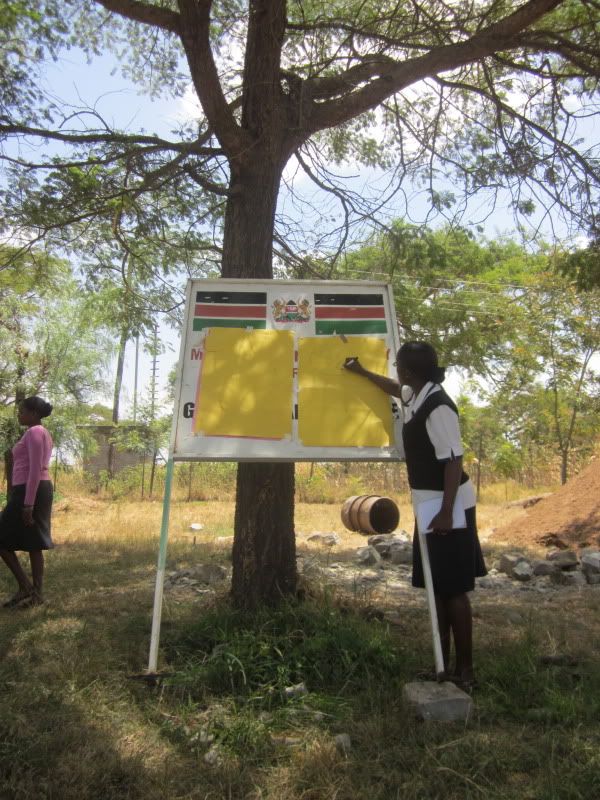
Purity drew a plate and split it into four sections: grains like rice, protein-rich foods like beans, vegetables like spinach, and fiber-rich foods like cowpeas or cabbage.
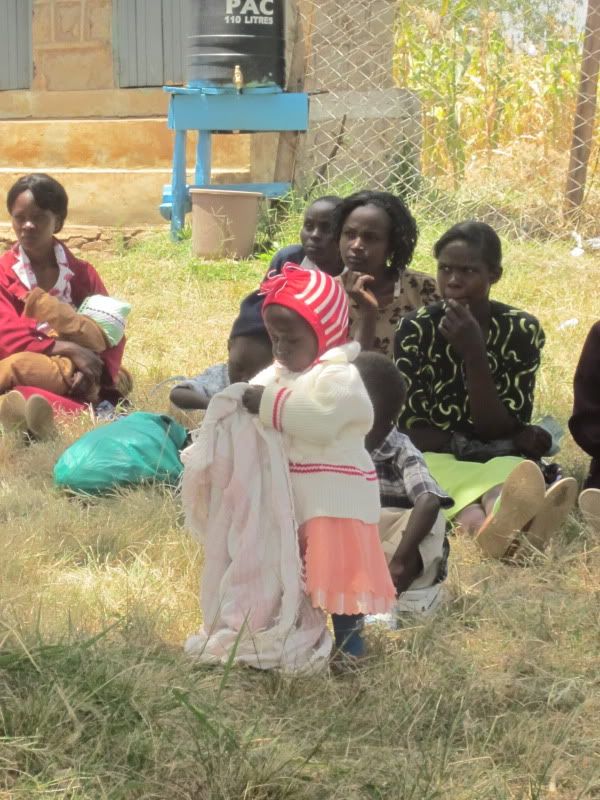
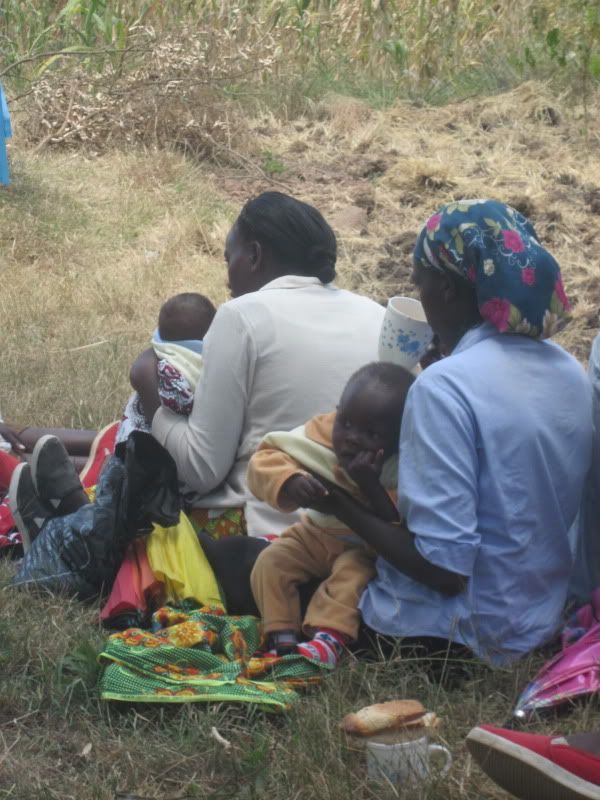
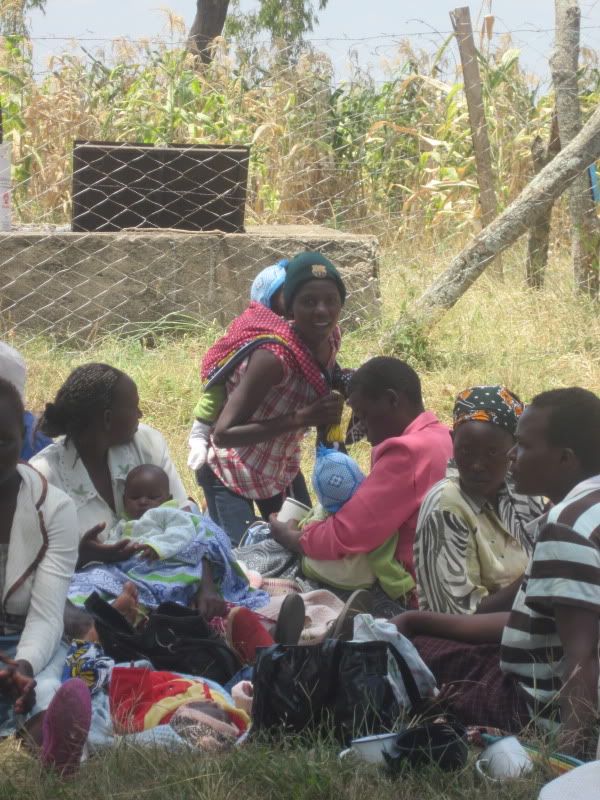
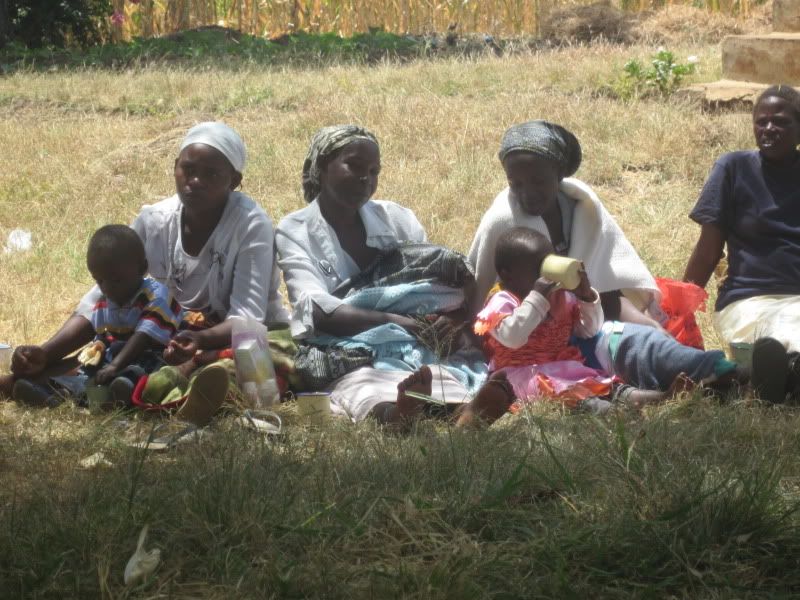
After Purity finished, the group took a break for tea. Each participant was handed a cup of tea and a sandwich of white bread and processed cheese. I turned to Francis and said something like, "Isn't this a workshop on nutrition, and isn't white bread less nutritious than brown bread [the Kenyan term for whole wheat bread]? Then why are we serving white bread?" I think - or at least hope - I put the question more diplomatically. Francis replied that brown bread does not taste good and the "only one who eat brown bread are diabetic."
That isn't an 100% true claim because Samuel's family eats brown bread. However, it IS a widespread perception. I brought the subject up to Samuel and his wife Peris later that day, and they told me that brown bread is so unpopular that the local supermarket does not even carry it. They have to special order it to get it, or else they have to drive all the way into Thika to the enormous supermarket there.
At this point in the workshop, a man began addressing the group. I think he was the director of the dispensary. Francis had already introduced me to the mothers, and I had already said a few words about who I am and why I came to Kenya to them, which Francis had translated. But now, this man came to me and told me the women like me. He said some of them had never seen a white person before. The women wanted me to speak. I awkwardly said a few words, which he translated, and hoped that it was enough. He asked when I would return to this area and said the women wanted me to come back.
Then he started saying something that sounded like a cheer or a chant, and the women were all raising their arms and fluttering their fingers. I wasn't sure what this was but figured I ought to do so too. Then the man told me that the women were raising their arms for me, and I felt stupid, as if I had been applauding for myself or something.
I was grateful when the workshop resumed and a different nurse presented about HIV/AIDS. I am not sure of her name, partly because the Kikuyus mix up the R and L sounds like the Japanese do, and her name began with either an R or an L but I don't know which.
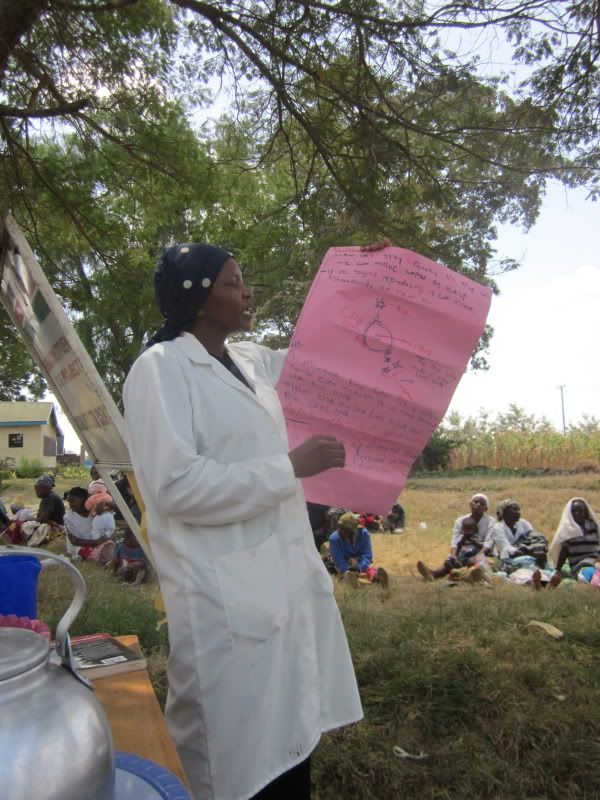
Nurse speaking about HIV/AIDS
She seemed to be describing how the disease works inside your body, but the main point she was driving home was that the #1 way to get AIDS is via unprotected sex. And she told how to take precautions while giving birth at home if the mother is HIV positive so that the midwife does not become infected. Thika District has the highest rate of HIV/AIDS in all of Central Province, largely because of the industry here means there's plenty of money flowing around for men to spend on prostitutes. Here's a 2001 article on the issue. As of 1999, 34% of the population had HIV/AIDS. HIV/AIDS rates peaked in Kenya in the mid-90s and have gone down since then, and Thika has been a major focal point of efforts to combat HIV/AIDS and all of its horrible side effects (like orphaned children and the challenges they face). Another site says that HIV/AIDS peaked in Thika at 37.4% in 2001 and decreased to 4.1% as of 2011. If that's the case, it means either lots of HIV positive residents left Thika or died, and/or lots of HIV negative people moved into Thika or were born in just 10 years.
No comments:
Post a Comment